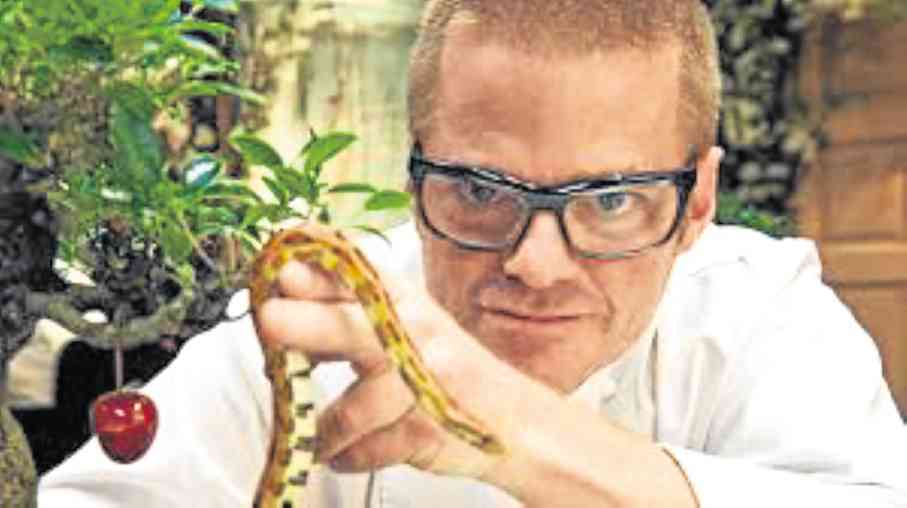OUR RECENT feature on TV shows about exotic and “extreme” cuisine elicited strong and appropriately lively reactions from readers, so we trust that today’s “cooking and eating” show of choice will be similarly welcome:
The show we recently viewed, “Recipe for Romance” (on TLC), lived up to its intriguing title. It did so by providing a number of dishes for couples on a Valentines’ Day date, designed to make doubly sure that the romantic rendezvous would end up as—a Night to Remember!
The chef assigned to come up with the requisite modern-day love potions was Heston Blumenthal, who’s made it a point to study the varied psychological effects and consequences of exotic and aphrodisiac cuisine. Beefing up his professional and personal research were the inputs of a panel of experts.
Among the resource persons tapped for the culinary special was a “mentalist” who correctly guessed in advance that Heston would sketch a giant balloon, out of the myriad choices available to him.
The mentalist explained that it wasn’t all guesswork: before Heston took up his pen and sketchpad, he had already been secretly “primed” to make that specific choice.
This input prompted Heston to fill the four test couples’ dining room with all sorts of “romantic” markers and inducers, both visual and aural.
In addition, he came up with five dishes specifically intended to increase the couples’ affectionate and even passionate feelings for each other.
He started the romantic meal with a unique appetizer made up of a bouquet that turned out to be much more than just a flower arrangement.
The roses featured edible petals, and jar-shaped pods that contained wine that was poured into glasses, adding to the evening’s enchantment—and heady intoxication!
Next came a delectable arrangement of “pearls” that turned out to be made out of caviar, coated and speed-frozen into tiny balls that popped surprisingly and delightfully when bitten into!
This was followed by a dish that appeared to recreate the Forbidden Fruit that Adam and Eve bit into in the Garden of Eden.
Sustaining the special meal’s theme of surprise and seduction, the apple was in fact made of pigeon meat—an unexpected taste treat that the couples loved.
To complete the Garden of Eden motif, a tiny snake slithered through each mini-landscape, thrilling the “sexily snacking” lovers even more!
Other culinary creations featured more aphrodisiacs like chocolate and oysters, and the couples’ loving feelings were very visibly further enhanced!
At the end of the romantic culinary experiment, they affirmed this by scoring significantly higher on the scientific Sternberg’s Triangular Tower of Love.
Such a “scientific” measure of desire levels does exist—would you believe?
